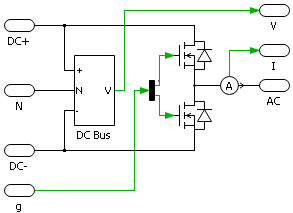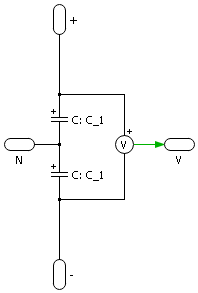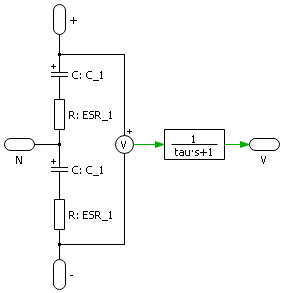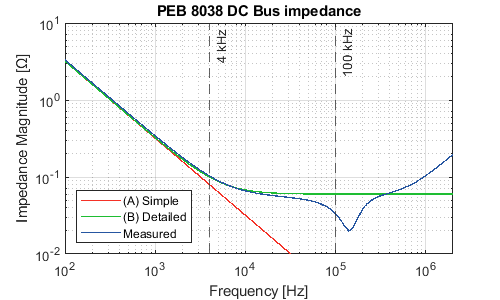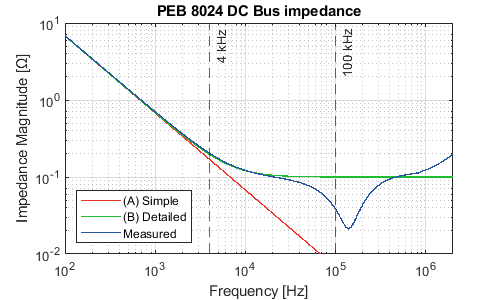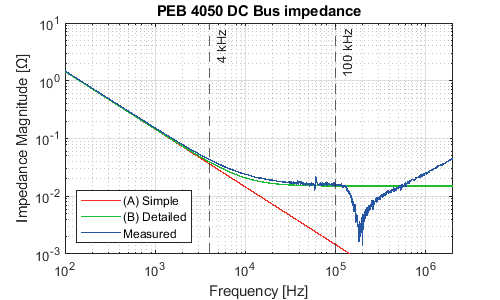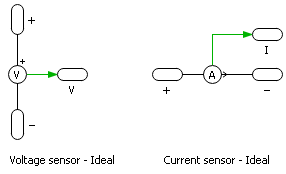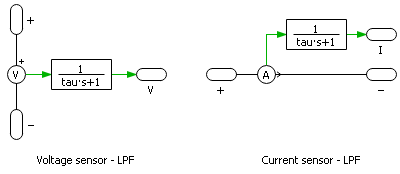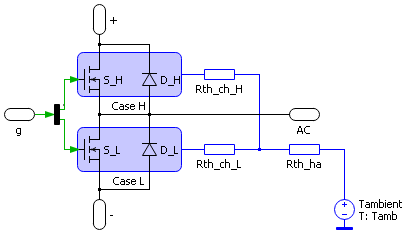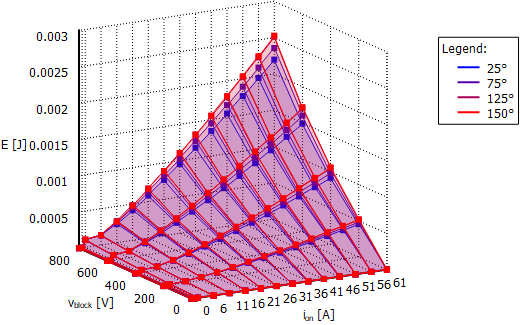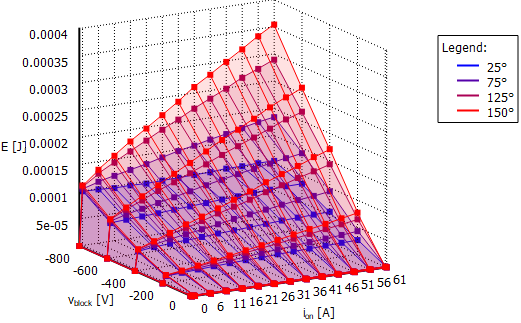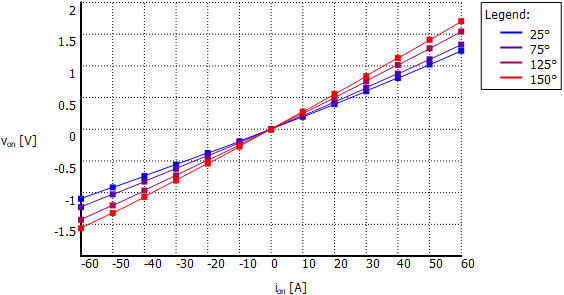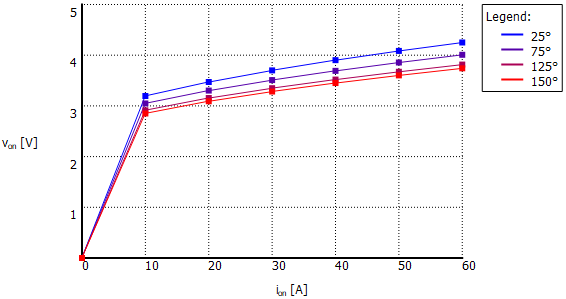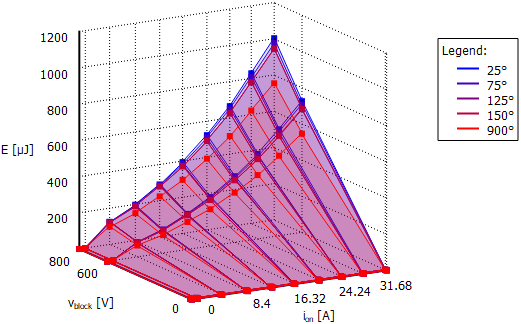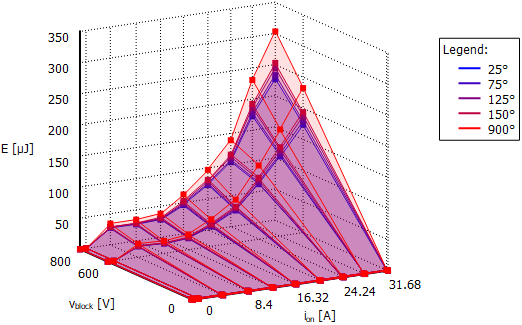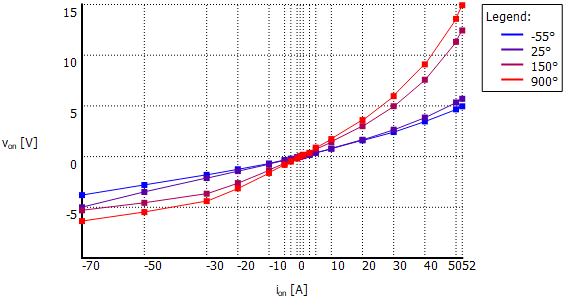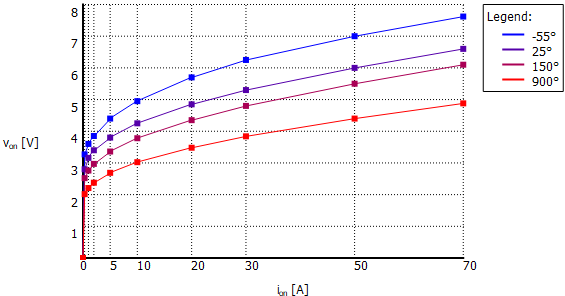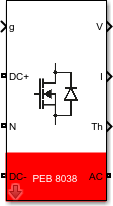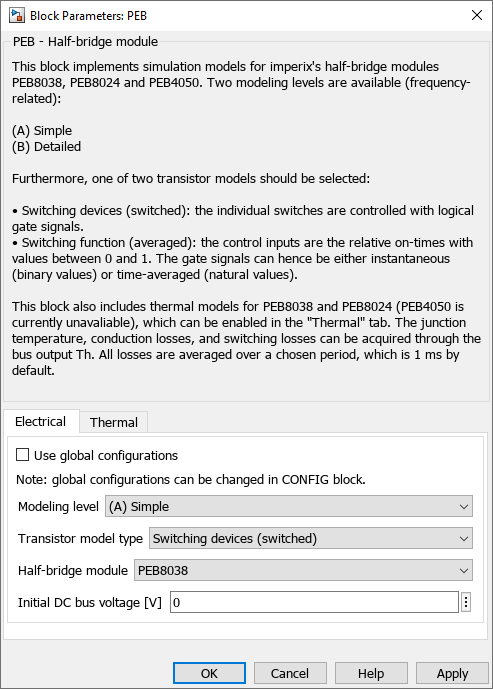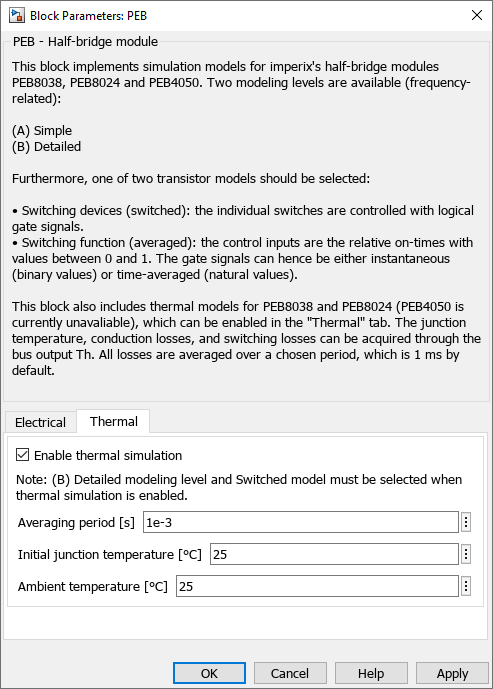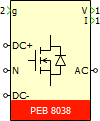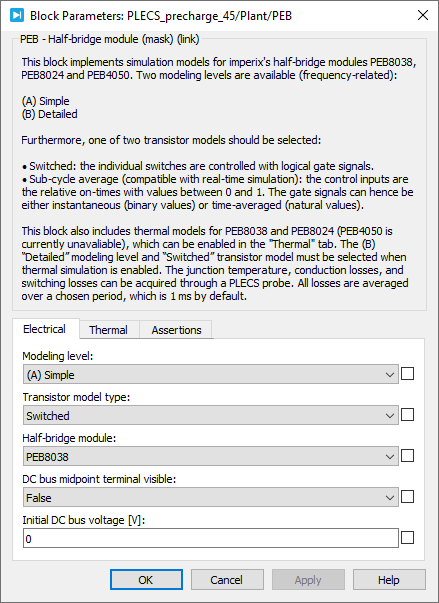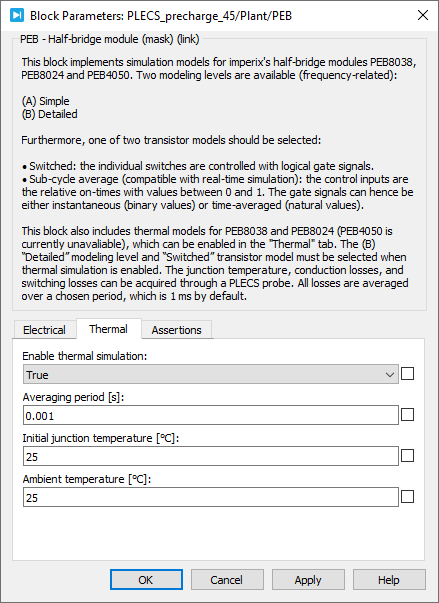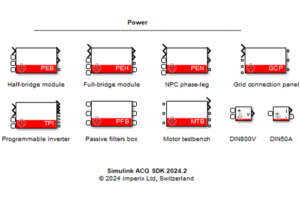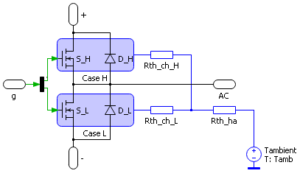Table of Contents
The PEB block is a simulation model included in the Imperix Power library. It models the imperix half-bridge module PEB8038, PEB8024, and PEB4050 in Simulink and PLECS simulation. For more information regarding the Imperix Power library, please read PN150.
This block also provides thermal models for PEB8038 and PEB8024 (PEB4050 is currently unavailable). For more information regarding thermal simulation with the Imperix Power library, please read PN132.
• Simulink R2016a or newer.
• Plexim PLECS 4.5 or newer.
Electrical modeling of PEB
The schematic of the electrical model of PEB is depicted on the right. It has two modeling levels:
- (A) Simple
- (B) Detailed
For more detailed model parameters and measurement results, please contact [email protected].
DC bus
The schematic of the equivalent DC bus is shown below.
The simulation model is relevant within a given frequency range. The frequency validity range is 0-4 kHz for the (A) Simple level and 0-100 kHz for the (B) Detailed level. In that range, the impedance and transfer function of the model are reasonably close to the modeled system, which can be seen along with the plots of the proposed models. The model parameters are also displayed below.
Embedded sensors
A generic sensor can be approximately modeled by an ideal sensor in series with an optional first-order Low-Pass Filter (LPF). The relationship between sensor’s bandwidth \(f_{BW}\) and the time constant \(\tau\) of the LPF follows \(\tau = \frac{1}{2\pi f_{BW}}\).
A sensor is modeled as a first-order LPF only if its bandwidth lies within the frequency range of a given modeling level. Otherwise, it is modeled as an ideal sensor. The following table summarizes the information on all the sensors in the PEB.
| Sensor | Bandwidth [kHz] | (A) Simple | (B) Detailed |
|---|---|---|---|
| PEB voltage sensor | 8 | Ideal | LPF |
| PEB current sensor | 280 | Ideal | Ideal |
Power transistors
The PEB block offers two options for modeling the power transistors:
- Switched The transistors are modeled by individual power semiconductors. The control inputs are instantaneous logical gate signals.
- Averaged The transistors are modeled by controlled voltage and current sources. The control inputs are the relative on-times of the semiconductors with values between 0 and 1. The gate signals can be either instantaneous (using only values 0 and 1) or time-averaged.
Although the functionality is practically the same, these options are named differently in PLECS and Simulink Simscape to be consistent with their naming conventions.
In Simulink Simscape they are named:
- Switching devices
- Switching function
In PLECS they are named:
- Switched
- Sub-cycle average
Thermal modeling of PEB
The schematic of the thermal model of PEB8038 and PEB8024 is depicted on the right.
It includes the loss model of the semiconductors and the thermal impedance network between the junction and the ambient temperature.
Thermal impedance network
The thermal impedance model models only the thermal resistances, and all the thermal capacitances are either ignored or fixed at a small value to reduce the simulation time for the system to reach a thermal steady state. The model parameters are displayed below. Note that the thermal impedance between the junction and the case is included in the transistor’s thermal description file and thus is not present in the schematic above.
| Thermal resistance | Value [K/W] |
| MOSFET junction to case resistance | 0.2755 |
| Diode junction to case resistance | 0.2755 |
| Case to Heatsink resistance Rth_ch | 0.406 |
| Heatsink to ambient temperature resistance Rth_ha | 0.2839 |
| Thermal resistance | Value [K/W] |
| MOSFET junction to case resistance | 0.6466 |
| Diode junction to case resistance | 0.6466 |
| Case to Heatsink resistance Rth_ch | 0.41 |
| Heatsink to ambient temperature resistance Rth_ha | 0.3463 |
Semiconductor loss model
The semiconductor’s turn-on loss \(E_{on}\), turn-off loss \(E_{off}\), and on-state drain-to-source voltage \(V_{on}\) are modeled by look-up-tables provided by manufacturers. The module’s switching loss \(P_{sw}\) is calculated by periodic impulse averages of \(E_{on}\) and \(E_{off}\) over a chosen period, which is 1ms by default. The conduction loss \(P_{cond}\) is calculated by \(P_{cond} = V_{on} \cdot I_{on}\). The detailed model implementation in Simulink and PLECS can be viewed in PN132, and the look-up-tables are provided below.
Simulink PEB block
Port specification
- The input
gis the gate signal. It has a width of 2, representing the signals for the high and low gates.- For
Switching devices (switched)model,gis the 0/1 PWM signal. - For
Switching Function (averaged)model,gcan be either the 0/1 PWM signal or the duty cycle between 0 and 1.
- For
- The output
Vis the measured voltage across the DC bus. - The output
Iis the measured output current. - The output
This the thermal simulation results. This port is only visible when thermal simulation is enabled. - The connection port
DC+is the electrical port connected to the positive pole of the DC bus. - The connection port
DC-is the electrical port connected to the negative pole of the DC bus. - The connection port
Nis the electrical port connected to the midpoint of the DC bus. - The connection port
ACis the electrical port connected to the AC output.
Electrical parameters
Use global configurationsis ticked when the block receives global configurations from theConfigblock.Modeling levelselects the modeling level of the peripheral circuits.Transistor model typeselects the model of the power transistors.Half-bridge moduleselects the type of PEB products to be simulated.Initial DC bus voltage [V]defines the initial voltage across the DC bus when the simulation starts.
Thermal parameters
Enable thermal simulationis ticked when the thermal simulation is enabled.Averaging period [s]defines the averaging period for calculating switching loss.Initial junction temperature [°C]defines the initial junction temperature when the simulation starts.Ambient temperature [°C]defines the ambient temperature throughout the simulation.
PLECS PEB block
Port specification
- The input
gis the gate signal with a width of 2, representing the signals for the high and low gates.- For
Switchedmodel,gis the 0/1 PWM signal. - For
Sub-cycle averagemodel,gcan be either the 0/1 PWM signal or the duty cycle between 0 and 1.
- For
- The output
Vis the measured voltage across the DC bus. - The output
Iis the measured output current. - The connection port
DC+is the electrical port connected to the positive pole of the DC bus. - The connection port
DC-is the electrical port connected to the negative pole of the DC bus. - The connection port
Nis the electrical port connected to the midpoint of the DC bus. - The connection port
ACis the electrical port connected to the AC output.
Electrical parameters
Modeling levelselects the modeling level of the peripheral circuits.Transistor model typeselects the model of the power transistors.Half-bridge moduleselects the type of PEB products to be simulated.DC Bus midpoint terminal visibleshows or hides the portN.Initial DC bus voltage [V]defines the initial voltage across the DC bus when the simulation starts.
Thermal parameters
Enable thermal simulationis ticked when the thermal simulation is enabled.Averaging period [s]defines the averaging period for calculating switching loss.Initial junction temperature [°C]defines the initial junction temperature when the simulation starts.Ambient temperature [°C]defines the ambient temperature throughout the simulation.
Probe signals
The following signals can be monitored by a Probe block in PLECS.
Gate signalsmonitors the gate signals present at the inputg.DC Bus voltage true value [V]monitors the true value of the DC bus voltage in Volt.DC Bus voltage sensor output [V]monitors the physical output of the DC bus voltage sensor in Volt.Output current true value [A]monitors the true value of the output current in Amp.Output current sensor output [V]monitors the physical output of the output current sensor in Volt.
The following signals contain thermal simulation results that can be monitored when thermal simulation is enabled.
Transistor H junction temperature [°C]monitors the junction temperature of transistor H in °C.Transistor L junction temperature [°C]monitors the junction temperature of transistor L in °C.Total conduction loss [W]monitors the module’s total conduction loss in Watt.Total switching loss [W]monitors the module’s total switching loss in Watt.Transistor H conduction loss [W]monitors the conduction loss of transistor H in Watt.Transistor L conduction loss [W]monitors the conduction loss of transistor L in Watt.Transistor H switching loss [W]monitors the switching loss of transistor H in Watt.Transistor L switching loss [W]monitors the switching loss of transistor L in Watt.


